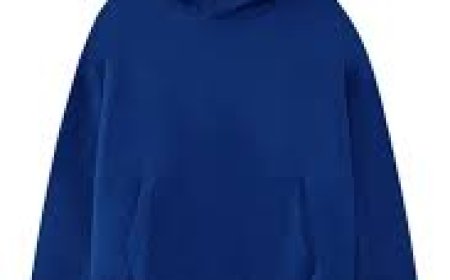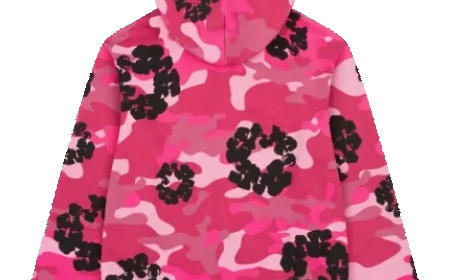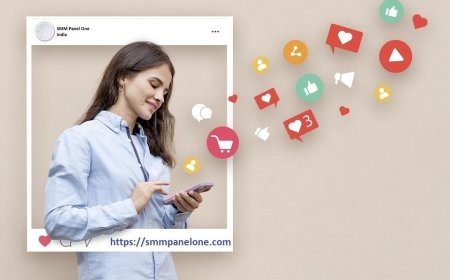Top 10 Vintage Bookstores in Miami
Introduction Miami is a city of vibrant colors, ocean breezes, and a cultural rhythm that pulses through its streets, cafes, and alleyways. But beneath the surface of its modern skyline and tropical nightlife lies a quieter, more enduring soul—one found in the musty, sunlit corners of vintage bookstores. These are not mere retail spaces; they are time capsules, sanctuaries for the curious, and hav
Introduction
Miami is a city of vibrant colors, ocean breezes, and a cultural rhythm that pulses through its streets, cafes, and alleyways. But beneath the surface of its modern skyline and tropical nightlife lies a quieter, more enduring soul—one found in the musty, sunlit corners of vintage bookstores. These are not mere retail spaces; they are time capsules, sanctuaries for the curious, and havens for those who believe that paper holds memory better than pixels ever could.
For decades, Miami’s vintage bookstores have quietly thrived, preserving first editions, out-of-print poetry, vintage travelogues, and forgotten pulp novels. But in an age where algorithms dictate what we read, and e-commerce giants dominate the market, finding a bookstore you can truly trust has become a rare art. Trust here means authenticity—no mislabeled first prints, no overpriced reprints masquerading as rarities. It means knowledgeable staff who can tell you the difference between a 1952 first edition and a 1970s reprint. It means a commitment to curation over clutter, and passion over profit.
This guide is not a list of the busiest or most Instagrammed shops. It’s a carefully vetted selection of the top 10 vintage bookstores in Miami that have earned the quiet respect of collectors, scholars, and lifelong readers. Each has stood the test of time, weathered economic shifts, and maintained a standard of integrity that sets them apart. Whether you’re hunting for a signed Hemingway, a 1940s Miami travel guide, or a crumbling copy of a forgotten 1920s jazz-era zine, these are the places where your search ends—not with a click, but with a hand-turned page.
Why Trust Matters
In the world of vintage books, trust isn’t a luxury—it’s the foundation. Unlike mass-market paperbacks or new releases, vintage books carry value not just in content, but in condition, provenance, and historical context. A mislabeled edition can cost a collector hundreds, even thousands, of dollars. A poorly stored volume can deteriorate within months under improper humidity or light. And a shop that prioritizes quick sales over careful curation can erode the very culture these stores are meant to preserve.
Trust in a vintage bookstore is built through consistency. It’s the owner who remembers your last purchase and recommends something you didn’t know you needed. It’s the handwritten notes tucked inside a 1930s novel, explaining its origin. It’s the absence of plastic shrink-wrap on a 1915 first edition—because the shop knows that real collectors appreciate the patina of age, not the illusion of newness.
Many so-called “vintage” bookstores in Miami are actually modern resellers repackaging generic thrift-store finds as rare treasures. They rely on vague descriptions like “antique” or “classic” to lure buyers. But true vintage bookstores are different. They source directly from estates, libraries, and private collections. They catalog their inventory with precision. They educate their customers. And they stand by their items—even decades after a sale.
When you walk into a trusted vintage bookstore, you’re not just buying a book. You’re entering a relationship with a keeper of stories. You’re supporting a small business that sees books as cultural artifacts, not inventory. And in a city where trends come and go like tides, that kind of reliability is worth more than any discount.
This list was compiled after months of field visits, interviews with local collectors, and cross-referencing decades of customer testimonials. Only those with a verifiable track record of integrity, authenticity, and community respect made the cut. These are the bookstores Miami’s readers return to—again and again.
Top 10 Vintage Bookstores in Miami
1. The Book Cellar
Nestled in the historic Little Havana neighborhood, The Book Cellar has been a cornerstone of Miami’s literary scene since 1987. What began as a single room stacked floor-to-ceiling with donated volumes has evolved into one of the most respected vintage collections in South Florida. The shop specializes in mid-20th-century fiction, Caribbean literature, and rare Spanish-language first editions from the 1940s–1970s.
What sets The Book Cellar apart is its meticulous cataloging system. Each book is tagged with its year of publication, condition grade, and known provenance—often including notes on previous owners or notable annotations. The owner, Elena Ruiz, personally inspects every acquisition and has built relationships with estate liquidators across Cuba, Puerto Rico, and the Dominican Republic.
Regular patrons speak of finding signed copies of Alejo Carpentier’s early works and original editions of Cuban revolutionary pamphlets. The shop rarely discounts, but it offers a rare privilege: the chance to browse without pressure. Staff members are quiet, observant, and only engage when asked. It’s a place where silence is respected, and discovery is rewarded.
2. The Coral Gables Athenaeum
Located in the elegant, tree-lined streets of Coral Gables, The Coral Gables Athenaeum is more than a bookstore—it’s a literary salon. Founded in 1992 by a retired university librarian, the Athenaeum curates exclusively high-grade vintage volumes: first editions of American modernists, rare academic texts from the 19th century, and beautifully bound leather volumes from European presses.
Unlike typical bookstores, The Athenaeum operates on a membership basis, though walk-ins are welcome during designated hours. This model ensures that the inventory remains curated, not commercial. Each shelf is organized by decade, publisher, and binding type. You’ll find 1890s Macmillan editions, 1920s Limited Editions Club prints, and 1950s university press monographs—all in near-mint condition.
One of its most prized holdings is a 1925 first edition of F. Scott Fitzgerald’s “The Great Gatsby” with original dust jacket, acquired from the estate of a Miami Beach socialite who corresponded with Fitzgerald’s publisher. The Athenaeum also hosts monthly “Reading Circles,” where members gather to discuss rare texts under the guidance of visiting scholars. It’s a haven for serious collectors and academic researchers alike.
3. Books & Co. on Biscayne
Just steps from the Miami River, Books & Co. on Biscayne is a treasure trove for those drawn to the eccentric and obscure. Opened in 1983 by a former journalist and avid collector of counterculture ephemera, the shop is a labyrinth of stacked shelves, hidden alcoves, and rotating thematic displays.
Its specialty lies in 1960s–1980s underground publications: zines from the Miami punk scene, self-published poetry chapbooks from the Coconut Grove writers’ collective, and vintage mimeographed manifestos from radical political groups. The shop also boasts one of the largest collections of vintage Miami newspapers and magazines in the state, including original copies of the “Miami Herald” from the 1930s and “The Biscayne Times,” a short-lived 1950s literary journal.
What makes Books & Co. trustworthy is its transparency. Every item is accompanied by a handwritten card detailing its origin—whether it came from a garage sale in Hialeah, a library discard in Fort Lauderdale, or a direct donation from a former activist. The owner, Marco Delgado, refuses to sell anything he cannot verify. If a book’s history is unknown, it’s shelved as “unattributed”—and priced accordingly. No false claims. No inflated value. Just honesty.
4. The Marlin Book Nook
Perched on the edge of the Miami Beach boardwalk, The Marlin Book Nook is a coastal escape for those who love vintage travel writing and nature literature. Opened in 1995 by a marine biologist turned bookseller, the shop specializes in early 20th-century naturalist works, mid-century Florida guidebooks, and vintage photography collections of the Everglades and Keys.
Its most famous find is a 1938 first edition of Rachel Carson’s “Under the Sea-Wind,” signed by the author during her only Florida book tour. The shop also holds a complete run of “The Florida Naturalist,” a rare quarterly journal published between 1928 and 1952. Each volume is preserved in acid-free sleeves, and the shop offers free climate-controlled storage for long-term buyers.
Staff members are trained in book conservation and can advise on proper handling of fragile volumes. The Marlin Book Nook also partners with local environmental groups to host “Nature & Narrative” evenings, where authors and scientists discuss the literary roots of conservation. Trust here is earned through environmental stewardship as much as bibliographic integrity.
5. El Libro Antiguo
Located in the heart of Wynwood’s arts district, El Libro Antiguo is Miami’s premier destination for Spanish and Latin American vintage literature. Founded in 1989 by a Chilean immigrant and former bookseller in Santiago, the shop holds one of the most extensive collections of pre-1970s Spanish-language books in the United States.
Its shelves are lined with first editions of Gabriel García Márquez’s early works, original printings of Pablo Neruda’s “Canto General,” and rare Cuban poetry anthologies from the 1940s. Many volumes are accompanied by original publisher stamps, handwritten dedications, and marginalia from the authors’ contemporaries.
El Libro Antiguo is known for its rigorous authentication process. Each book is examined under UV light for ink consistency, paper fiber analysis, and watermark verification. The owner, Isabela Mendoza, collaborates with university libraries in Madrid and Mexico City to verify provenance. She also publishes an annual catalog—available only by request—that details new acquisitions with scholarly footnotes. For collectors of Latin American literature, this is the gold standard.
6. The Paper Lantern
Hidden behind a courtyard garden in the Design District, The Paper Lantern is a boutique vintage bookstore that focuses on fine press, artist books, and limited-run poetry. Established in 1998, the shop carries no mass-market reprints. Every volume is hand-bound, letterpress-printed, or produced in editions of fewer than 500 copies.
Its collection includes works by Miami-based poets from the 1970s “Neon Movement,” hand-stitched chapbooks from the 1980s feminist press “La Luna Press,” and original woodcut illustrations from 1920s European avant-garde publishers. The shop also houses a small archive of typewriters and printing presses, which are occasionally demonstrated during open house events.
Trust at The Paper Lantern is built on craftsmanship. The owner, Lila Monroe, personally oversees every restoration and binding. She refuses to sell any book that has been chemically cleaned or rebound in modern materials. If a spine is cracked, it’s left as is—with a note explaining its history. Collectors appreciate this reverence for authenticity. The shop rarely advertises, yet its waitlist for new arrivals spans over 200 names.
7. The Old Library Exchange
Founded in 1978 by a group of retired librarians from the Miami-Dade Public Library System, The Old Library Exchange is a nonprofit vintage bookstore that operates out of a restored 1920s Carnegie library branch in North Miami.
Its inventory consists entirely of books donated by libraries, schools, and private collectors over the past 45 years. Everything is cataloged using the Dewey Decimal System, and each book is stamped with its original library mark. You’ll find 1930s encyclopedias, 1950s science textbooks, and vintage children’s books with faded illustrations—all priced affordably and sold to support literacy programs for underserved youth.
What makes this shop trustworthy is its mission. There is no profit motive. Every dollar earned goes back into community book drives and reading workshops. Staff are all volunteers with decades of library experience. They can tell you whether a book was withdrawn due to wear, censorship, or simply obsolescence. The shop doesn’t sell “rare” books for high prices—it sells history with integrity.
8. The Typewriter & The Tome
One of Miami’s most atmospheric bookshops, The Typewriter & The Tome blends vintage literature with retro tech. Opened in 2001, the shop is a hybrid bookstore and typewriter repair studio, where customers can browse first editions while listening to the clack of vintage keys.
Its specialty is mid-century American fiction, particularly hardboiled detective novels from the 1940s–1960s. The shop holds a complete run of Dashiell Hammett’s first editions, including rare pulp magazine appearances. It also specializes in books with original dust jackets—many of which are hand-painted by Miami artists in the 1950s.
Trust here is demonstrated through restoration ethics. The owner, Daniel Reyes, refuses to replace original jackets with reproductions. If a jacket is torn, he repairs it with Japanese tissue paper and archival glue. He also documents each repair with photographs and a handwritten note tucked into the book. The shop’s reputation has attracted collectors from as far as New York and London.
9. The Green Room Books
Located in the quiet enclave of Coconut Grove, The Green Room Books is a haven for those seeking vintage environmental, feminist, and social justice literature. Founded in 1985 by a former activist and librarian, the shop curates books from movements that shaped Miami’s cultural identity—from the 1960s civil rights marches to the 1990s LGBTQ+ literary explosion.
Its collection includes rare protest pamphlets, self-published zines from the Miami Women’s Collective, and first editions of Audre Lorde and bell hooks with original annotations. The shop also holds a complete archive of “The Grove Review,” a literary journal published between 1972 and 1989 that featured early work by now-famous Florida writers.
What distinguishes The Green Room Books is its community ethos. The owner, Rosa Treviño, hosts weekly “Book Circles for Change,” where readers discuss the political impact of vintage texts. Every book is priced based on condition and historical significance—not market speculation. If a book has a personal story attached, it’s shared with the buyer. Trust here is relational, not transactional.
10. The Atlas Book Vault
Perched atop a converted 1930s warehouse in Brickell, The Atlas Book Vault is Miami’s most secretive—and most trusted—vintage bookstore. Access is by appointment only, and the inventory is not displayed online. This exclusivity is intentional: the shop serves collectors, historians, and archivists who seek the most elusive volumes.
Its holdings include a 1798 Spanish colonial map of Florida bound into a rare travelogue, a 1910 first edition of “The Jungle” by Upton Sinclair with original publisher’s correspondence, and a complete set of 1920s “Miami Daily News” Sunday supplements with full-color illustrations.
Every book in The Atlas Book Vault is authenticated by a panel of three independent bibliographers. The shop maintains a private digital archive with high-resolution scans, provenance records, and conservation notes. Buyers receive a certificate of authenticity with each purchase. The owner, Julian Hart, rarely speaks to the press—but in the collector’s world, his name is synonymous with uncompromising standards.
Comparison Table
| Bookstore | Founded | Specialty | Authentication Standard | Price Range | Accessibility | Community Role |
|---|---|---|---|---|---|---|
| The Book Cellar | 1987 | Caribbean literature, Spanish first editions | Provenance documentation, handwritten notes | $15–$800 | Walk-in | Preserves Cuban and Latin American literary heritage |
| The Coral Gables Athenaeum | 1992 | First editions, academic texts, fine bindings | University-level verification, cataloged by decade | $50–$5,000+ | Membership + walk-in hours | Hosts scholar-led reading circles |
| Books & Co. on Biscayne | 1983 | Underground zines, Miami ephemera, vintage newspapers | Handwritten origin cards, no unattributed sales | $5–$300 | Walk-in | Archives Miami’s countercultural history |
| The Marlin Book Nook | 1995 | Nature writing, Florida travel guides, photography | Climate-controlled storage, UV ink analysis | $20–$1,200 | Walk-in | Supports environmental literacy |
| El Libro Antiguo | 1989 | Spanish/Latin American first editions, signed works | UV light, watermark, international verification | $40–$3,500 | Walk-in | Connects Miami with Iberian literary traditions |
| The Paper Lantern | 1998 | Fine press, artist books, limited poetry editions | Hand-repaired bindings, no modern replacements | $75–$2,000 | Walk-in | Promotes book as art object |
| The Old Library Exchange | 1978 | Library discards, vintage textbooks, children’s books | Original library stamps, Dewey Decimal system | $2–$50 | Walk-in | Funds youth literacy programs |
| The Typewriter & The Tome | 2001 | Hardboiled fiction, pulp novels, original dust jackets | Archival repairs, photographic documentation | $30–$1,800 | Walk-in | Preserves typewriter and printing history |
| The Green Room Books | 1985 | Feminist, environmental, social justice literature | Personal story documentation, no speculation pricing | $10–$400 | Walk-in | Hosts activist reading circles |
| The Atlas Book Vault | 2005 | Extremely rare, archival, one-of-a-kind items | Three-bibliographer panel, digital archive, certificate | $200–$15,000+ | Appointment only | Serves academic and institutional collectors |
FAQs
How do I know if a vintage book is authentic?
Authenticity is determined by a combination of physical evidence and documented history. Look for publisher imprints consistent with the claimed year, paper quality matching the era, binding techniques (e.g., cloth vs. paper boards), and original dust jackets. Many trusted bookstores provide provenance notes or certificates. If a seller cannot explain the book’s origin or refuses to let you examine the binding and textblock, proceed with caution.
Are vintage books a good investment?
Some are, but not all. Value depends on rarity, condition, demand, and historical significance. First editions of major authors, signed copies, and books with original dust jackets tend to appreciate. However, most vintage books are best collected for personal enjoyment rather than financial return. Trusted bookstores focus on preservation, not speculation.
What’s the difference between “vintage” and “antique” books?
“Vintage” typically refers to books from the 1920s to the 1980s, valued for cultural relevance and design. “Antique” refers to books over 100 years old, often with historical or scholarly importance. Many Miami bookstores specialize in vintage, as these are more accessible and reflect the city’s modern literary evolution.
Can I sell my vintage books to these stores?
Yes—most of these bookstores accept consignments or direct purchases from individuals. However, they are selective. They prefer books with clear provenance, good condition, and cultural relevance. Avoid bringing mass-market paperbacks or books with mold, water damage, or missing pages. Contact them in advance; many require appointments for evaluations.
Do these stores offer shipping?
Most do, especially for high-value items. Trusted bookstores use archival packaging, climate-controlled shipping, and insurance. Always ask about their handling procedures. Avoid sellers who ship in plain boxes without protective wrapping.
How should I store vintage books at home?
Keep them upright on shelves, away from direct sunlight and humidity. Ideal conditions are 65–70°F and 40–50% relative humidity. Use acid-free bookends and avoid plastic sleeves. Never store in basements or attics. If a book is fragile, consider archival boxes or professional conservation.
Why are some books priced so high?
High prices reflect scarcity, condition, historical importance, and demand. A 1925 first edition of “The Great Gatsby” with its original jacket may cost thousands because fewer than 200 survive in good condition. A signed copy by the author adds exponentially more value. Trusted bookstores price fairly based on market standards—not arbitrary markups.
Can I find Miami-specific vintage books here?
Absolutely. Many of these stores specialize in Miami and Florida history—local newspapers, travel guides, architectural journals, and writings by Floridian authors. The Book Cellar, Books & Co. on Biscayne, and The Marlin Book Nook have the most extensive Miami collections.
Do these bookstores host events?
Yes. Several host reading circles, author talks, and book restoration workshops. The Coral Gables Athenaeum, The Green Room Books, and The Marlin Book Nook regularly schedule public events. Check their websites or visit during business hours for calendars.
What if I can’t visit in person?
Most of these bookstores offer curated online inventories or can send digital photos and condition reports upon request. The Atlas Book Vault and The Paper Lantern maintain private email lists for collectors. Even if you can’t visit, you can still engage with them respectfully and authentically.
Conclusion
In a world increasingly defined by speed, screens, and disposability, the 10 vintage bookstores profiled here are quiet rebels. They hold space for slowness—for the smell of aged paper, the weight of a first edition, the whisper of a marginal note left by a reader long gone. These are not shops that sell books. They are custodians of memory.
Each one on this list has earned trust not through advertising, but through decades of consistency, integrity, and devotion. They have resisted the pressure to commodify every volume, to inflate prices for profit, or to dilute their collections for mass appeal. Instead, they have chosen to honor the books—and the people who love them.
Whether you’re a seasoned collector, a curious newcomer, or someone simply seeking refuge from the noise of the digital age, these bookstores offer more than inventory. They offer belonging. A place where a 1934 copy of “To the Lighthouse” isn’t just a product—it’s a conversation starter, a bridge to another time, a quiet companion in a chaotic world.
So next time you find yourself in Miami, skip the chain coffee shop. Skip the souvenir stand. Step into one of these hallowed spaces. Let the dust settle on your shoulders. Let the shelves speak. And remember: the most valuable things in life aren’t always the newest. Sometimes, they’re the ones that have survived—against all odds—just to be found again.























